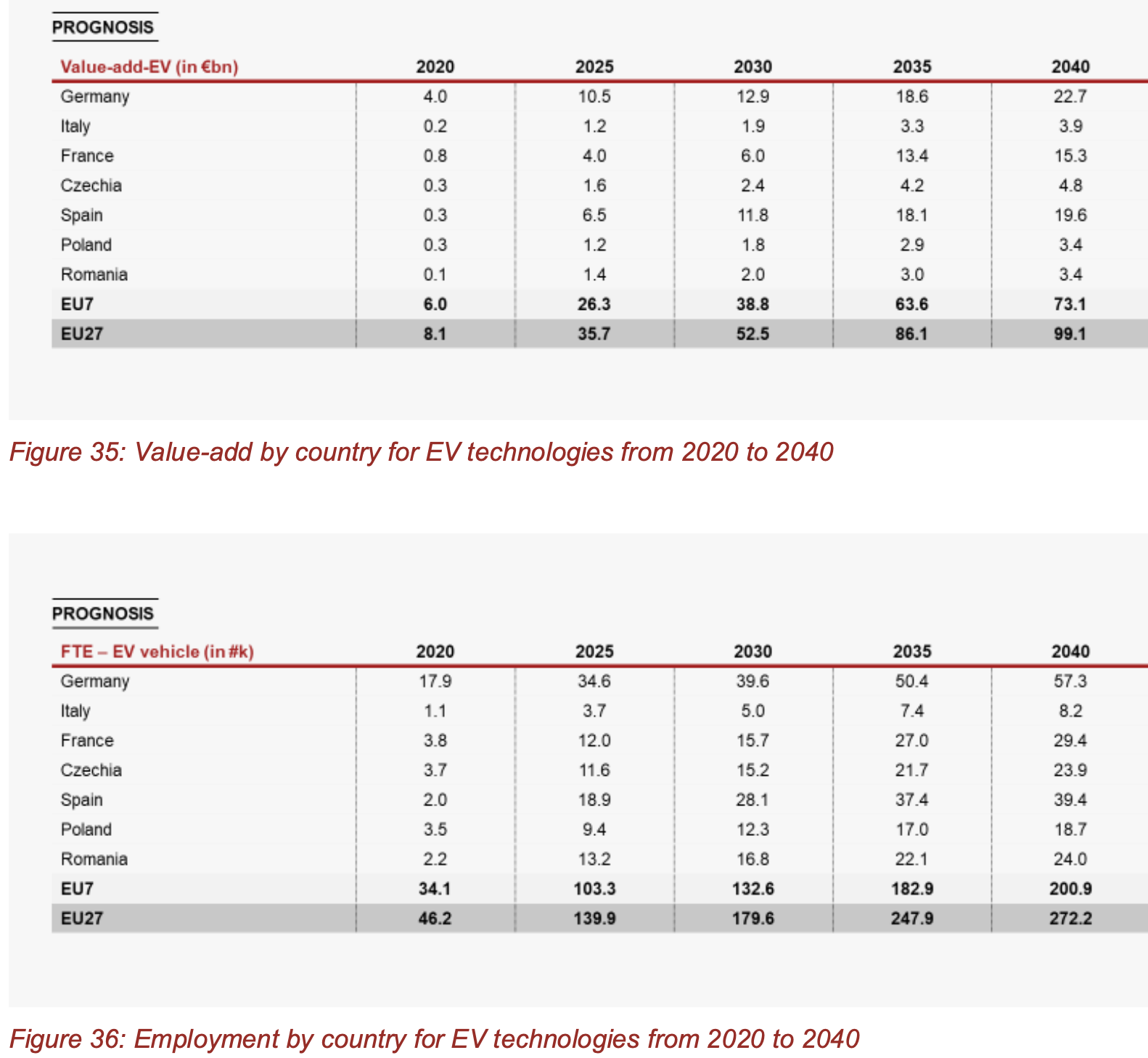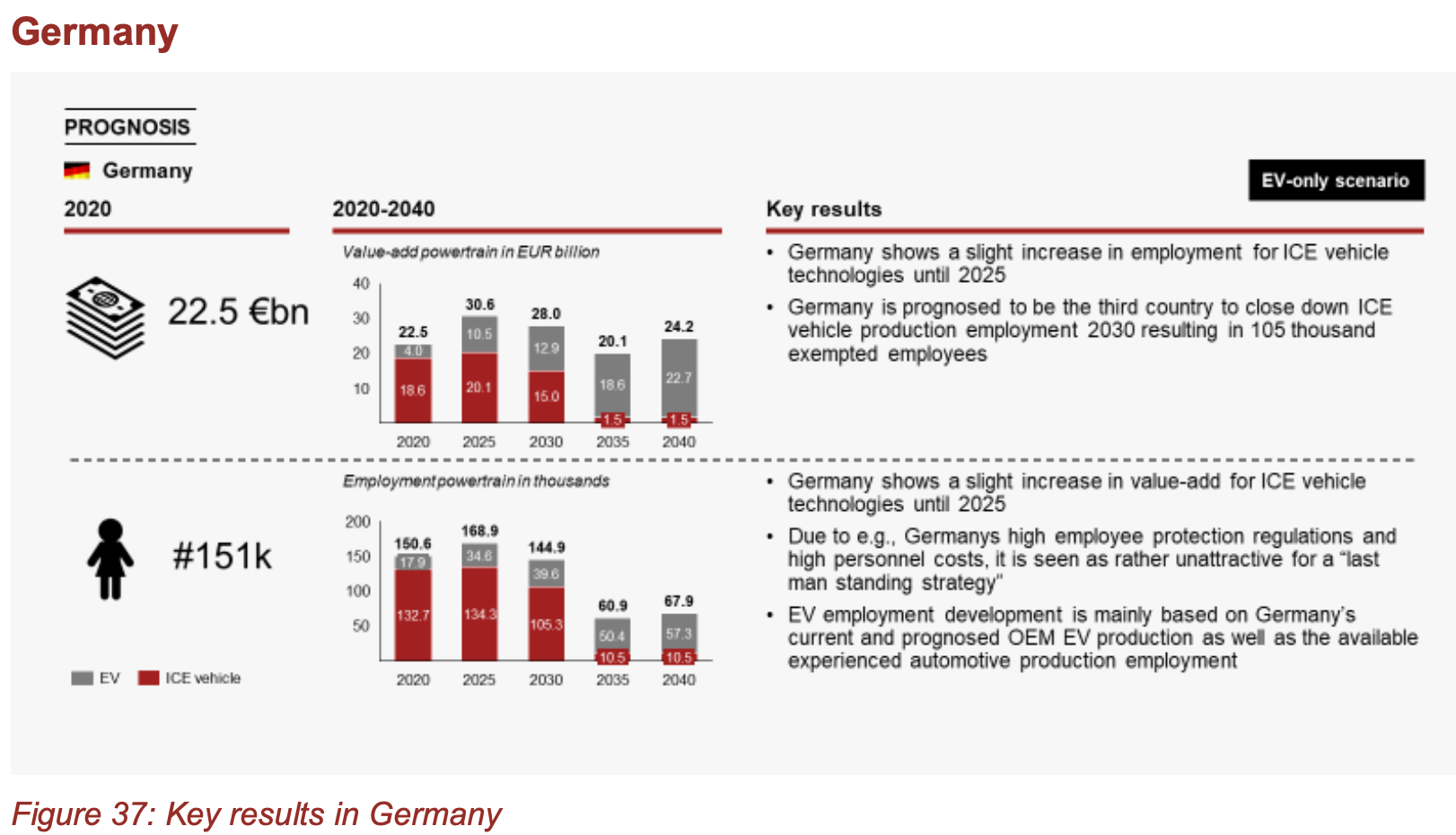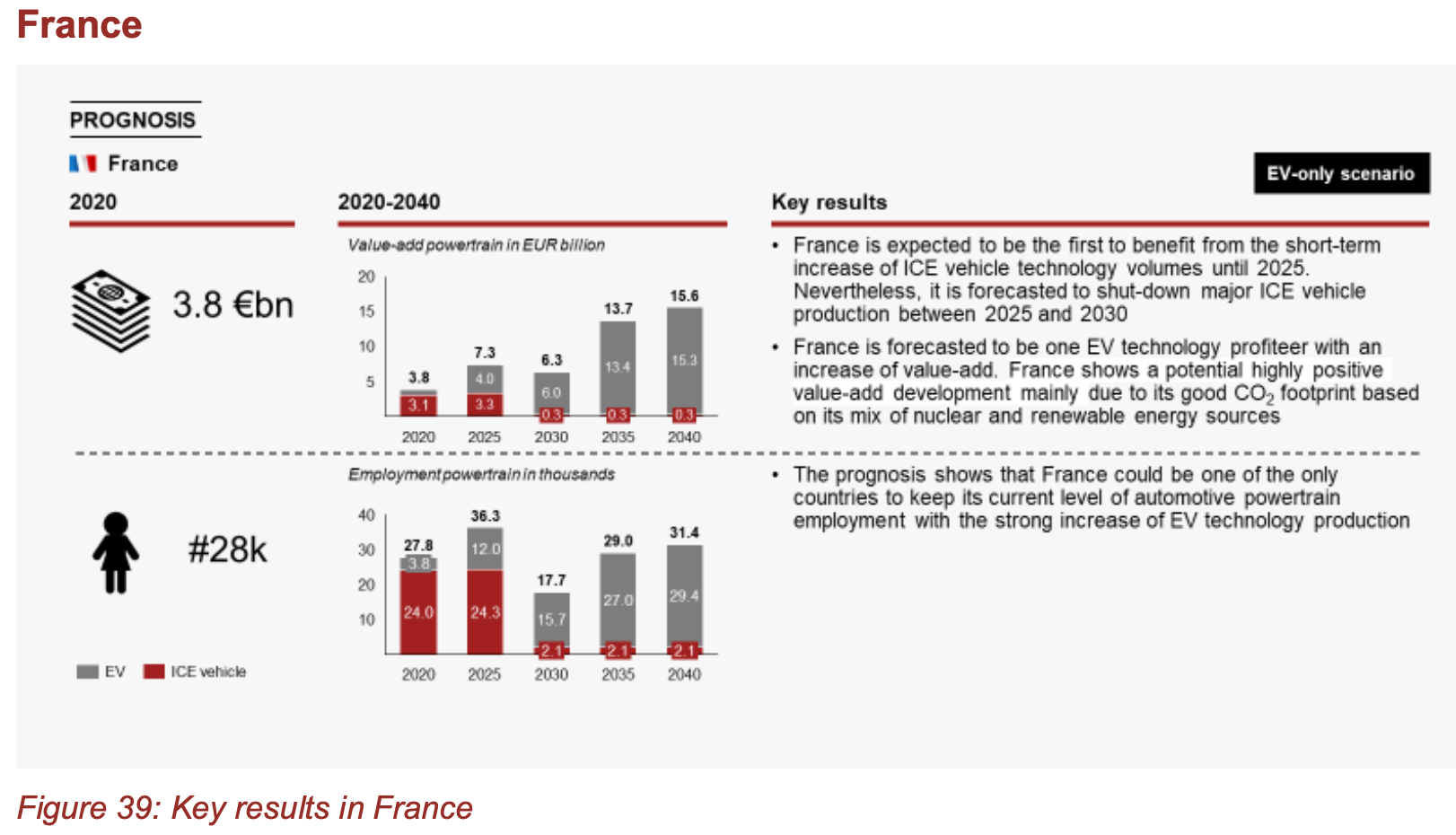Volkswirtschaft: Wirkung des Technologiewandels in der Automobilindustrie
Im morgigen Podcast (20. März 2022) geht es erneut um die wirtschaftlichen Folgen des Krieges in der Ukraine. Mit dabei Prof. Stefan Kooths, mit dem ich über die konjunkturellen Aussichten spreche und der Rechtsanwalt Dr. Stefan Proske über die Notwendigkeit zur Aussetzung der Konkursantragspflicht.
Außerdem mit dabei Henning Rennert, Partner der Unternehmensberatung Strategy&, mit dem ich über die Folgen des Strukturwandels für die Automobilzulieferindustrie spreche. Auslöser war eine Studie, die er mit Kollegen erstellt hat und von der ich einige Highlights hier herausgreife:
Der Hintergrund
- „Die Automobilindustrie sorgt in 13 EU-Mitgliedstaaten für mehr als 5 % der Gesamtbeschäftigung im verarbeitenden Gewerbe, wobei mehr als 60 % dieser Arbeitnehmer bei Automobilzulieferern beschäftigt sind.“ – bto: Das muss man erst mal im Hinterkopf haben. Denn diese fünf Prozent sind überdurchschnittlich gut bezahlt.
- „CLEPA, der europäische Verband der Automobilzulieferer, hat PwC Strategy& beauftragt, die Auswirkungen von drei verschiedenen Green Deal-Politikszenarien auf Beschäftigung und Wertschöpfung bei Automobilzulieferern in ganz Europa im Zeitraum 2020-2040 zu bewerten. Die Szenarien bilden einen gemischten Technologieansatz, den aktuellen reinen EV-Ansatz, der im Fit-for-55-Paket vorgeschlagen wird, und ein radikales EV-Intensivierungsszenario ab. Alle drei Szenarien gehen von einer beschleunigten Elektrifizierung aus, um die Klimaziele zu erreichen, mit einem hohen Marktanteil für Elektrofahrzeuge bis 2030 von jeweils mehr als 50 %, fast 80 % bzw. nahezu 100 %.“ – bto: Bei diesen Szenarien wird nicht geprüft, ob die erforderlichen Rohstoffe überhaupt beschafft werden könnten. Wichtig auch: Die Studie wurde vor dem Krieg in der Ukraine und den Sanktionen gegen Russland ausgearbeitet und veröffentlicht.
Die Hauptnachricht
- „501 000 Stellen werden bei Automobilzulieferern in der Produktion von Antriebsstrangkomponenten für Verbrennungsmotoren (ICE) bei Technologieauslauf bis 2035 voraussichtlich entfallen. (…) Von dieser halben Million Arbeitsplätze werden höchstwahrscheinlich 70 % (359 000) in einem Zeitraum von nur 5 Jahren von 2030–2035 verloren gehen, dies unterstreicht begrenzten Zeitrahmen zur Bewältigung der erheblichen sozialen und wirtschaftlichen Auswirkungen.“ – bto: Das ist zu unterstreichen. Und vor allem muss man festhalten, dass es – wie schon gesagt – sehr gut bezahlte Arbeitsplätze sind.
Die Szenarien
- „Mixed-technology scenario:
The mixed-technology scenario projects a 50% tailpipe CO2 reduction by 2030, compared to the 2020 95g NEDC passenger car target. This scenario assumes a role for sustainable renewable fuels to achieve net CO2 reductions with hybrid and other ICE-based technologies, hence meeting the Paris climate goals.“ – bto: Das wäre offensichtlich das Szenario, bei dem entsprechend viele Arbeitsplätze erhalten blieben.
- „EV-only scenario:
The EV-only scenario follows the STEP scenario, as proposed by the International Energy Agency (IEA) in 2020 and is on par with the approach taken by the European Commission’s Fit for 55 proposal. It projects a 60% tailpipe CO2 reduction by 2030 and a 100 % reduction by 2035.“ – bto: Das ist, was politisch gewollt ist. - „Radical EV-implementation scenario:
The radical scenario projects a 100 % tailpipe CO2 reduction by 2030, significantly more stringent than the European Commission’s Fit for 55 proposal.“ – bto: Dieses Szenario ist nicht vom Tisch, man muss sich nur die Kommentare der Politik anhören.
Und das sind die Ergebnisse:

Kernergebnis des Basisszenarios: Deutschland bleibt stabil, Spanien verdreifacht seine Wertschöpfung, Frankreich vervierfacht die Wertschöpfung. Der Umbau ist also für uns bestenfalls neutral, für die anderen ein großer Gewinn.
Woran liegt das?
- „Electrification puts powertrain employment at risk (potential net loss of up to – 275k employees until 2040).(…) Majority of future value-add in EV powertrain technologies depends on EU battery production (70% of value-add). Subsequently, European employment depends significantly on local battery production. A net reduction of 291k jobs is expected between the 2030 and 2035 timeframe alone. A total of 359k jobs impacted in the ICE domain only, making the transformation towards future needs necessary (e.g. software, electronics, infrastructure).“ – bto: Es geht also um die Batterieproduktion, die sehr energieintensiv ist und die sich deshalb dort lohnt, wo Energie günstig ist.
- „All scenarios and calculations have been made on the assumption that there will be a full battery value chain based in Europe, from the processing of raw materials to the final battery assembly. The battery accounting for 70% of the electric powertrain value share is indispensable for employment in Europe. Based on the current public debate and company announcements, this assumption appears fair.(...) However, major obstacles remain, such as local sourcing of critical minerals needed for battery cell production and certainly timing remains a factor of uncertainty.“ – bto: Es hängt alles an der Batterie.
- „The radical scenario will give the industry only five years to settle a completely new value architecture changing the heritage of 125 years. There is hope for the auto industry to stay relevant in European countries, but it will likely necessitate investments in new capabilities and new employment scenarios that require significant reskilling, particularly in the areas of IT/software, electrical engineering, and chemical engineering.“ – bto: Hier gibt es Fortschritte, es ist aber keineswegs ausgemacht, dass es klappt.

Quelle: Strategy&
- „Several criteria define a country’s attractiveness for integrating additional value-add into production facilities as some ICE vehicle technologies facilities close down, or for investing in additional EV technologies facilities to ramp up EV manufacturing. Each criterion is weighted based on the conducted interviews and expert sessions according to its importance to the overall attractiveness score. The selected criteria and their respective weightings are as follows.” – bto: Die Energiekosten werden künftig eine wesentliche Rolle bei der Standortwahl spielen.

Quelle: Strategy&
Hier die Faktoren erklärt:
- “Degree of automation (20%): This reflects expected investments in assets with a higher degree of automation for EV technologies.“
- “Variable personnel (€/hour) and energy cost (€/kWh) as well as CO2 footprint within a country’s production (in g/kWh) (20%): This reflects a country’s average variable costs and carbon footprint. The lower the costs and carbon footprint, the more attractive a country becomes.” – bto: Das ist schlecht für Deutschland.
- “Skilled labour force, (20%): Reflects the availability of employees with automotive powertrain production expertise being released due to the decrease ICE vehicle production volumes.“
- “OEM EV production 2020 (40%): This reflects the current level of country-specific EV vehicle production rates by OEMs. The higher the production, the more attractive a country becomes for future supplier investments.“ – bto: einfach wegen der Nähe und Vernetzung.
Insgesamt steigt die Wertschöpfung durch den Umbau. Ursache: Die Batterie hat hohen Anteil.

Aber die Beschäftigung sinkt:

Und nun zu den einzelnen Ländern:
 Quelle: Strategy&
Quelle: Strategy&
Ganz anders sieht es beim Aufbau von neuen Jobs aus:

Quelle: Strategy&


Quelle: Strategy&
- “The biggest winner in terms of technology areas for value-add and full-time employees will be EV batteries, which generate more than €70 billion and more than 200.000 FTE respectively. In addition, electric motors are expected to contribute significantly, at about €10 billion and roughly 30.000 FTE.“
- “Looking at this on a country level, most of the EU7 focus countries will increase their absolute value-add — most significantly France and Spain. France benefits the most with more EV FTE in 2040 compared with ICE-related FTE in 2020. Interestingly, the Czech Republic and Poland will be able to increase their overall employment until 2040 in the industry thanks to their stronghold position in ICE-technologies.” – bto: Betrachten wir es nüchtern – Klimapolitik ist auch Wettbewerbspolitik. Politiker, die das nicht verstehen oder verstehen wollen, betreiben eine Politik, die einen Schlüsselsektor ins Ausland treibt.
Hier der Link zur Studie:







